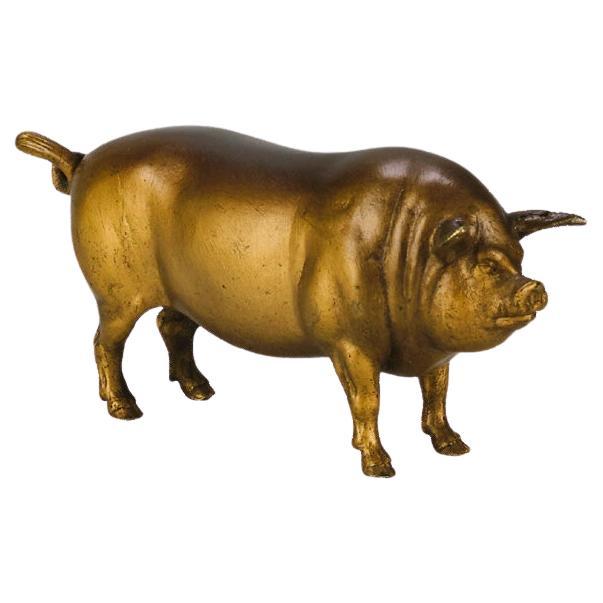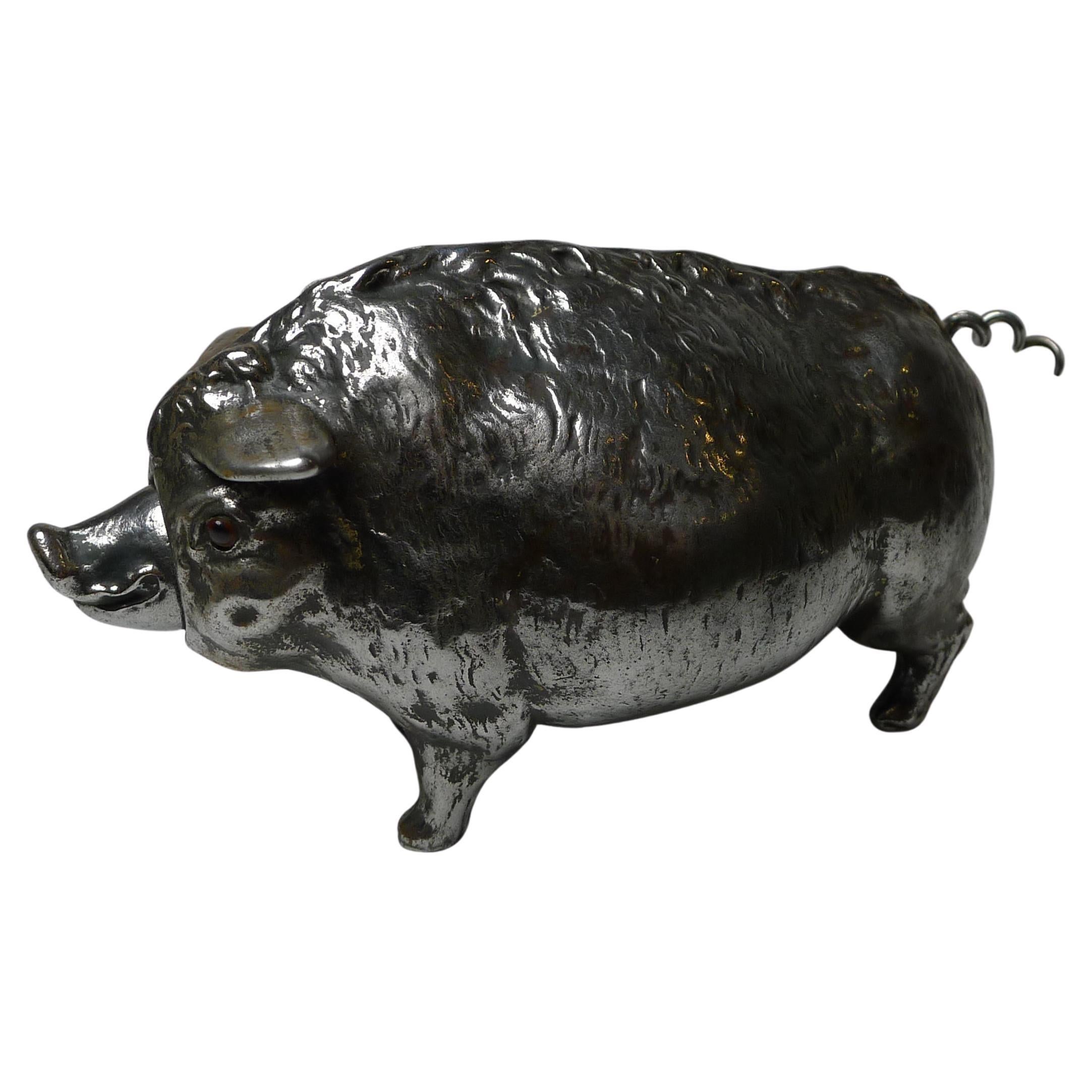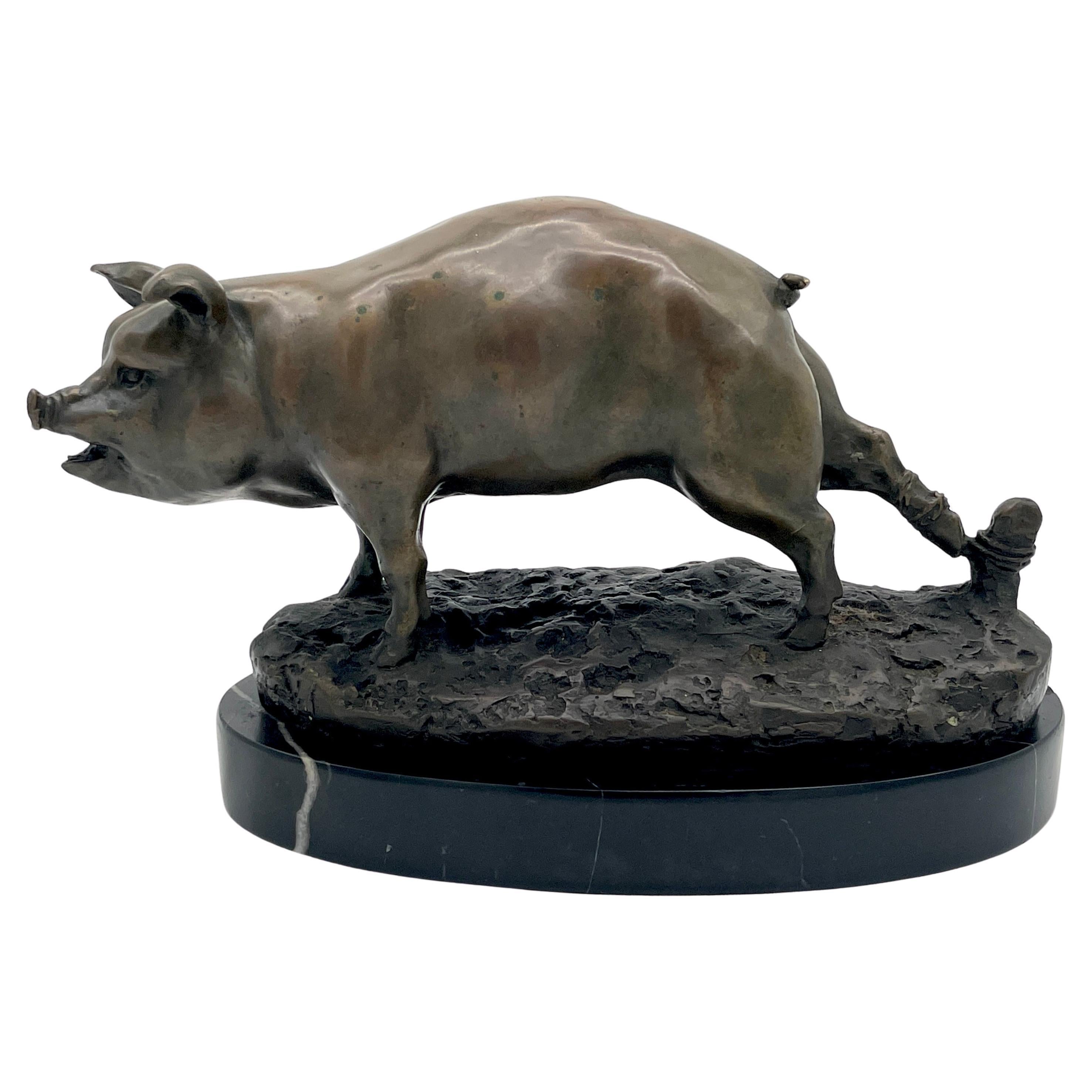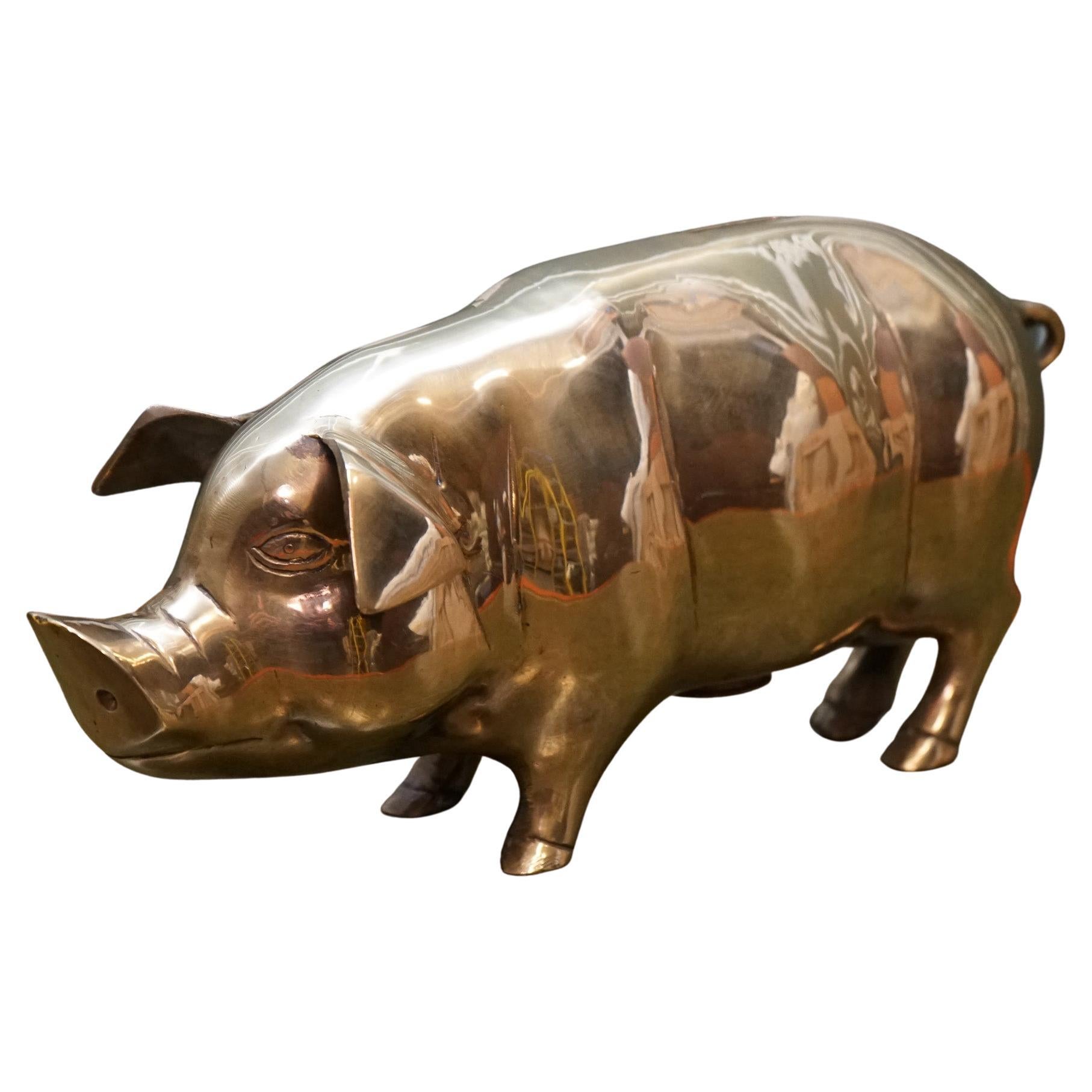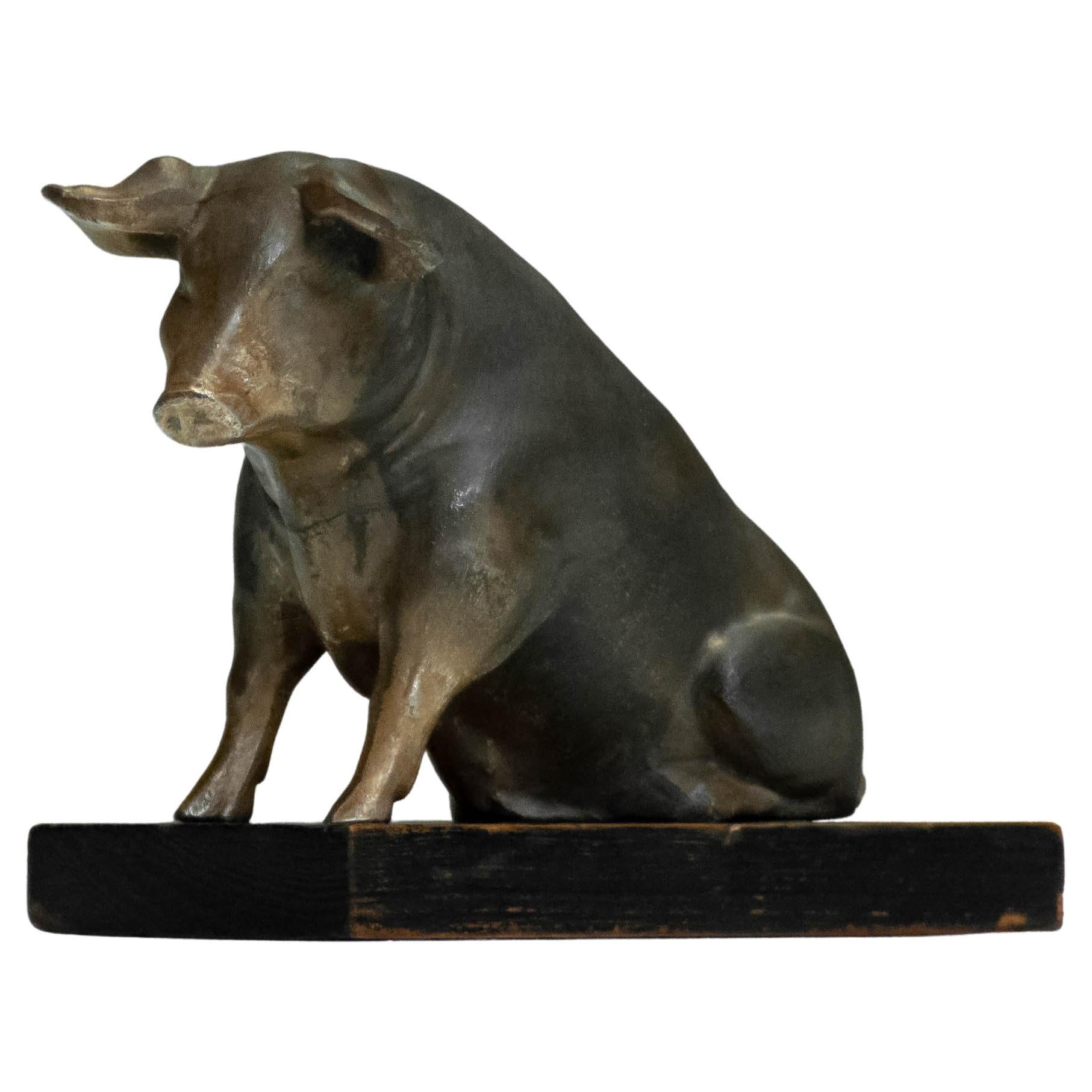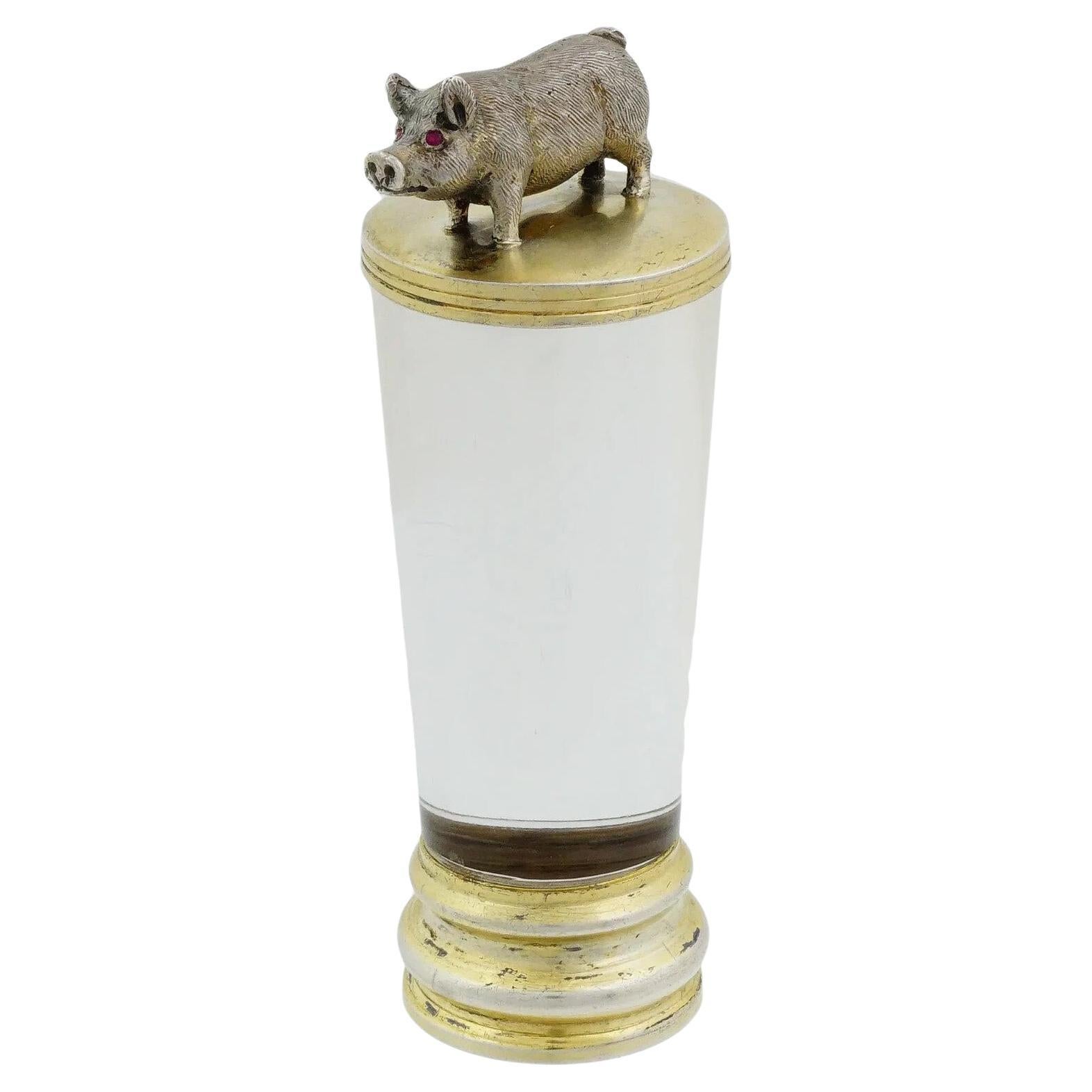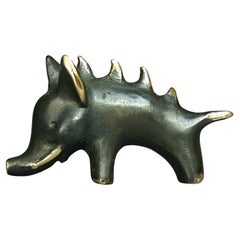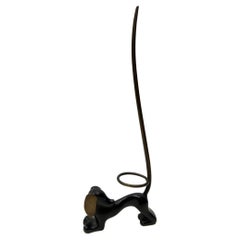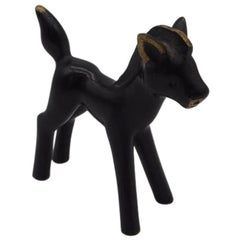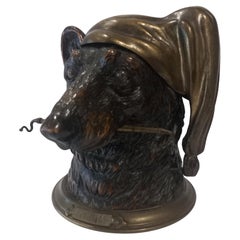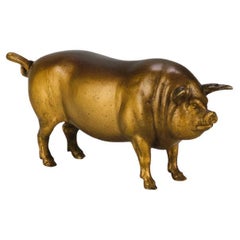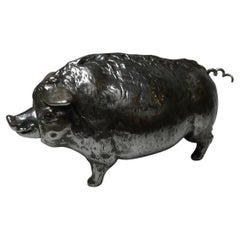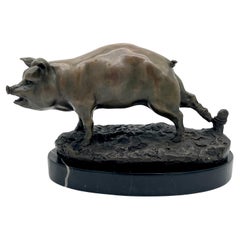Items Similar to Art Nouveau - Lucky pig with glass container and brush, Vienna bronze
Want more images or videos?
Request additional images or videos from the seller
1 of 8
Art Nouveau - Lucky pig with glass container and brush, Vienna bronze
$467.12
£346.16
€390
CA$637.71
A$709.42
CHF 371.89
MX$8,668.96
NOK 4,735.52
SEK 4,457.84
DKK 2,969.43
Shipping
Retrieving quote...The 1stDibs Promise:
Authenticity Guarantee,
Money-Back Guarantee,
24-Hour Cancellation
About the Item
The lucky pig is in good, used, original condition!
This is a rarity from the turn of the century and is very rare.
About the Seller
5.0
Vetted Professional Seller
Every seller passes strict standards for authenticity and reliability
Established in 1991
1stDibs seller since 2020
80 sales on 1stDibs
Typical response time: 1 to 2 days
- ShippingRetrieving quote...Shipping from: Vienna, Austria
- Return Policy
Authenticity Guarantee
In the unlikely event there’s an issue with an item’s authenticity, contact us within 1 year for a full refund. DetailsMoney-Back Guarantee
If your item is not as described, is damaged in transit, or does not arrive, contact us within 7 days for a full refund. Details24-Hour Cancellation
You have a 24-hour grace period in which to reconsider your purchase, with no questions asked.Vetted Professional Sellers
Our world-class sellers must adhere to strict standards for service and quality, maintaining the integrity of our listings.Price-Match Guarantee
If you find that a seller listed the same item for a lower price elsewhere, we’ll match it.Trusted Global Delivery
Our best-in-class carrier network provides specialized shipping options worldwide, including custom delivery.More From This Seller
View AllWalter Bosse figurine BOAR brass patinated new Vienna Austria
By Walter Bosse
Located in Vienna, AT
Boar. New production made in Austria. The figurine is special in its own way and requires 14 work steps. It is a "lost wax casting" piece.
Model number BO21
In 2000 a Viennese publi...
Category
2010s Austrian Mid-Century Modern Figurative Sculptures
Materials
Brass
Dog Ring Holder, Brass Blackened, in Style of Walter Bosse, Austria
By Walter Bosse
Located in Vienna, AT
A blackened brass ring holder in shape of a dog.
Category
Mid-20th Century Austrian Animal Sculptures
Materials
Brass
Black Pony, Brass, in Style of Herta Baller, Austria
By Walter Bosse
Located in Vienna, AT
A small black pony in the style of Walter Bosse/Herta Baller made of brass.
Category
Vintage 1950s Austrian Animal Sculptures
Materials
Brass
Antique tobacco box carved wood and bronze
Located in Vienna, AT
Antique rare tobacco box carved from wood with bronze mount
naturalistic dog head
Category
Antique 1880s Black Forest Animal Sculptures
Materials
Wood
Rare Walter Bosse, Hertha Baller, Donkey Sculpture, Mid-Century, Vienna Austria
Located in Vienna, AT
Hertha Baller, rare donkey sculpture, signed, mid-century, Vienna Austria. Good original Condition.
Category
Vintage 1950s Animal Sculptures
Materials
Brass
Hedgehog ashtray set Walter Bosse figurines brass patinated new Vienna Austria
By Walter Bosse
Located in Vienna, AT
In 2000 a Viennese public house released the first monograph about Walter Bosse. Illustrated with various pictures it shows his highly creative potential and his influence and impact...
Category
2010s Austrian Mid-Century Modern Figurative Sculptures
Materials
Brass
You May Also Like
Early 20th Century Austrian Bronze Sculpture "Standing Pig" by Franz Bergman
By Franz Bergmann
Located in London, GB
A very fine early 20th Century Austrian bronze study of a standing pig with excellent gilt colour and very fine hand finished surface detail, signed with the Bergman 'B' in an amph...
Category
Early 20th Century Austrian Art Nouveau Animal Sculptures
Materials
Bronze
Rare Polished Pig / Hog Mechanical Bell, C.1890
Located in Bath, GB
A rare find, this fabulous figural desk bell was cast in metal in the form of a pig with a quality screwed construction. The mechanical bell can be wou...
Category
Antique 1890s German Late Victorian Animal Sculptures
Materials
Metal
French School Animalier Sculpture Bronze of a Roped Prize Pig
By Antoine-Louis Barye
Located in West Palm Beach, FL
French School Animalier Sculpture Bronze of a Roped Prize Pig
20th Century France, Signed 'Barex'
This 20th-century French School Bronze An...
Category
20th Century European Sporting Art Animal Sculptures
Materials
Marble, Bronze
$1,196 Sale Price
20% Off
1920s ANTIQUE DECORATIVE BRASS PiGGY BANK
Located in Pulborough, GB
We are delighted to offer for sale this Lovely 1920s Antique Brass Piggy Bank.
The piggy bank would resemble an actual pig with all the features th...
Category
Antique 19th Century British Animal Sculptures
Materials
Brass
1930s Cast Saving Pig / Money Box Made by Swedish Gold Smith Olof W. Nilsson
Located in Silvolde, Gelderland
Absolutely beautiful and unique saving pig / money box made by Swedish gold smith Olof W. Nilsson in Kristianstad Sweden in the 1930s.
This money box is beautifully detailed shaped ...
Category
Vintage 1930s Swedish Other Models and Miniatures
Materials
Metal
Antique Rock Crystal Silver Mounted Pig Seal
Located in Long Island City, NY
A hand seal. Clear glass body, gilt silver fittings. Figurative pig finial with gemstone eyes. Unmarked. Collectible Desk Accessories, Writing Instruments, Jewelry.
Dimensions: 3 x 1...
Category
Antique Late 19th Century Unknown Victorian Historical Memorabilia
Materials
Rock Crystal, Silver
More Ways To Browse
Art Nouveau Glass With Bronze
Antique Glass Container
Antique Glass Containers
Bronze Containers
Vienna Bronzes Animals
Animal Sculptures Pig
Glass Pig
Bronze Pig Sculpture
Bronze Pigs
Mallard Furniture
Stag Vintage Furniture
Vintage Carved Wood Bear
Buffalo Horn
Vienna Bronzes Animals
Stag Sculpture
Vintage Elephant Sculpture
Cold Painted Bronze Animals
Guillaume Bronze
